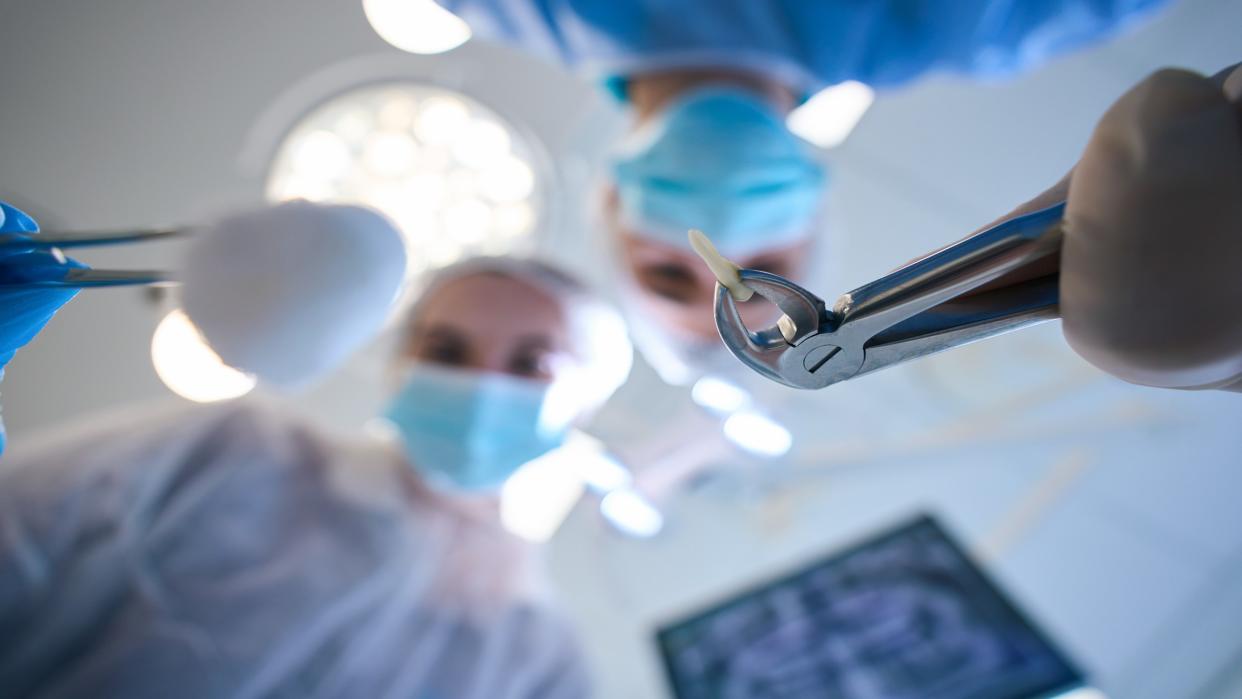In rare case, man's brain starts to bleed following tooth extraction at the dentist


In an unusual case, a man's trip to the dentist indirectly triggered bleeding in his brain and led to him being diagnosed with a rare genetic disorder.
Half an hour after having two teeth extracted, the man in Australia, who was in his late 60s, suddenly felt dizzy and started throwing up. His vision was distorted to the point where he saw objects as if they'd been rotated 90 degrees counterclockwise.
Soon after, he went to the emergency department, where doctors determined that he had high blood pressure and his eyes were flickering to the left. He also walked unsteadily and kept falling to the right. A computed tomography (CT) scan revealed that the lower left half of his brain was bleeding — a condition known as intracerebral hemorrhage (ICH).
ICH is a common form of stroke that can be triggered by many things, including abusing drugs like amphetamine, brain cancer, physical trauma and extremely low temperatures. For example, one woman with a history of high blood pressure developed it after taking part in the "Ice Bucket Challenge."
Related: This man had a key lodged in his brain. Here's how he survived.
However, prior to the man's unusual case, there'd been only three other reports of people developing ICH after visiting the dentist. In the new case, published Aug. 2 in the journal BMJ Case Reports, doctors believe the man's ICH was likely triggered by a sudden increase in blood pressure following his dental procedure.
There was, however, one more part of the puzzle to decipher.
When probing the man's medical history, the doctors found that six weeks before his trip to the dentist, he'd been referred for a CT scan after his general practitioner suspected he had Parkinson's disease, a progressive disease that kills neurons and causes movement issues. At the time, doctors didn't find any issues with the blood vessels in the man's brain, but they did notice signs of white matter disease — a condition in which reduced blood flow causes damage to nerve fibers that pass information between different parts of the brain. The emergency department doctors then confirmed these signs of white matter disease with a magnetic resonance imaging (MRI) scan.
To pinpoint the cause of the white matter disease, the case report authors analyzed the man's DNA and found that he had a mutation in a gene called NOTCH3, which is associated with a rare, inherited disease that causes the walls of blood vessels to thicken, reducing the flow of blood through the brain. This condition is known as cerebral autosomal dominant arteriopathy with subcortical infarcts and leukoencephalopathy (CADASIL).
CADASIL is often very difficult to diagnose, given severe cases only affect 2 in every 100,000 people and the disease's common symptoms, such as vision problems, feeling weak and struggling to walk, can often resemble other neurological conditions, such as multiple sclerosis.
RELATED STORIES
—Musician's head injury triggered rare synesthesia, causing him to 'see' music
—A man took antibiotics before going to the dentist. He developed an ultra-rare brain side effect
—10 bizarre medical case reports from 2022
ICH was originally thought to be a rare complication of CADASIL, the case report authors noted. However, recent research suggests it may be a more common complication than previously thought. Whether or not CADASIL and ICH are often linked, the case report authors flagged that this is the first time ICH has been reported in a patient with CADASIL following a dental procedure.
Following the man's emergency department visit, doctors prescribed him medication to treat his high blood pressure, and three months later, he reported that his symptom of unsteadiness had improved and his vision had returned to normal. He has since been put on a long-term course of aspirin to improve the blood flow in his brain and help prevent further strokes.

